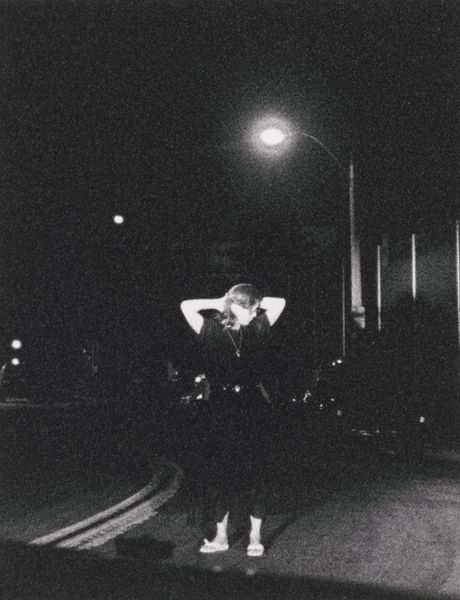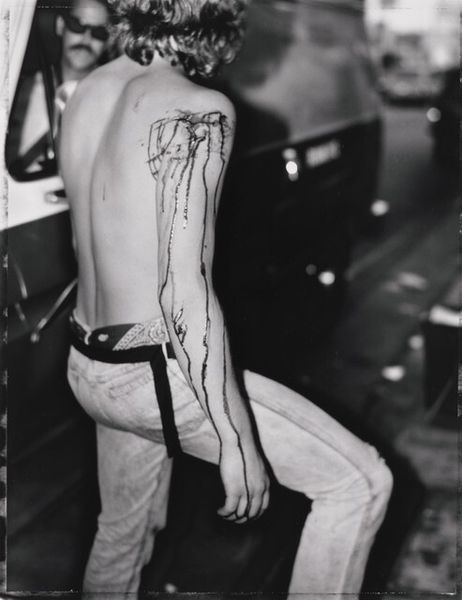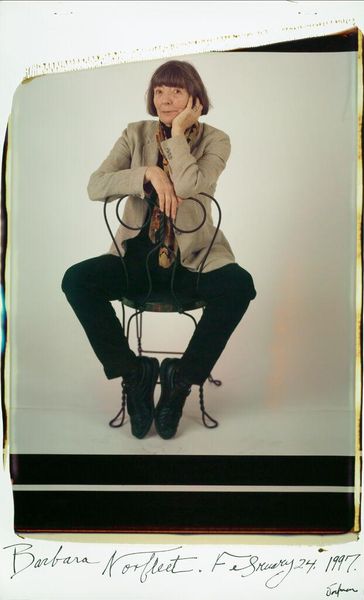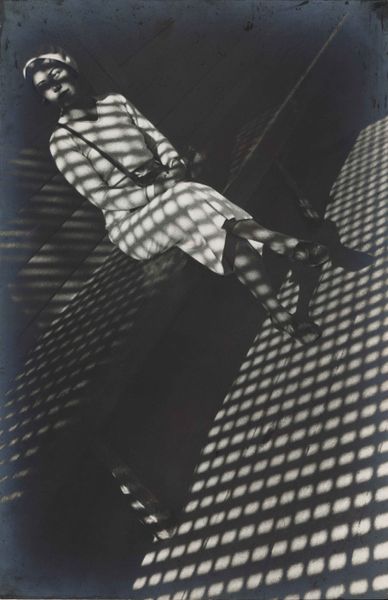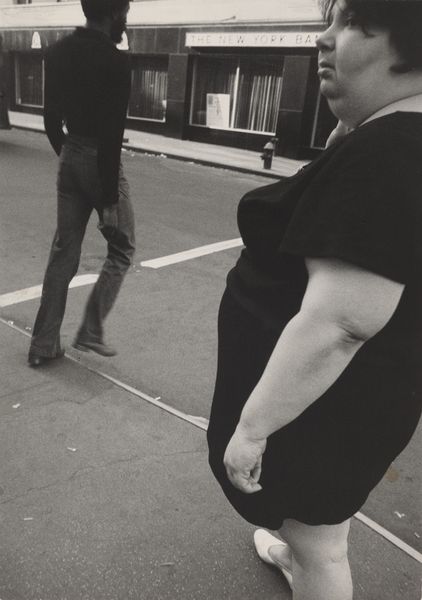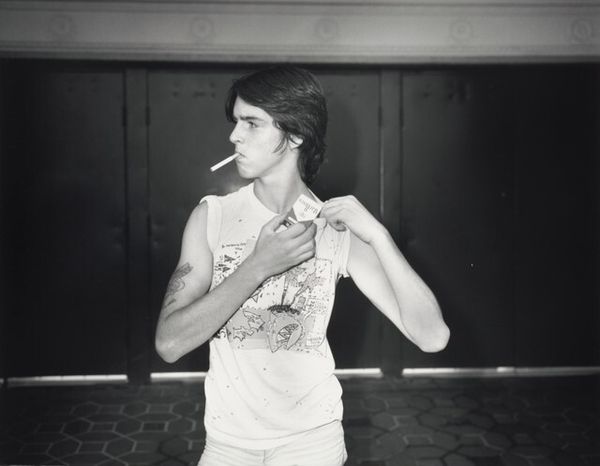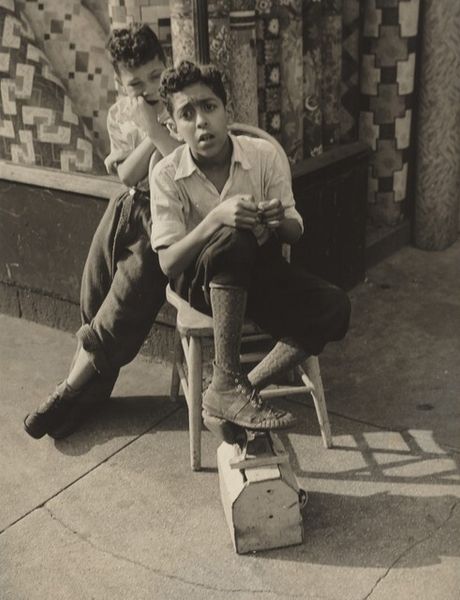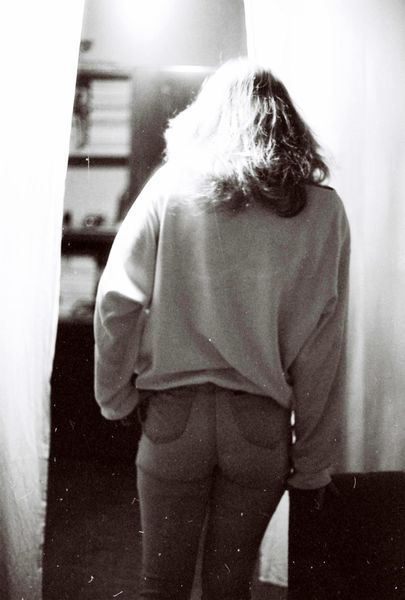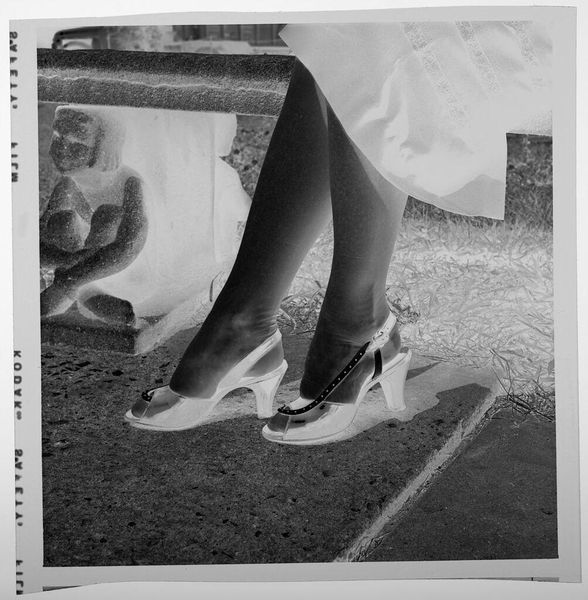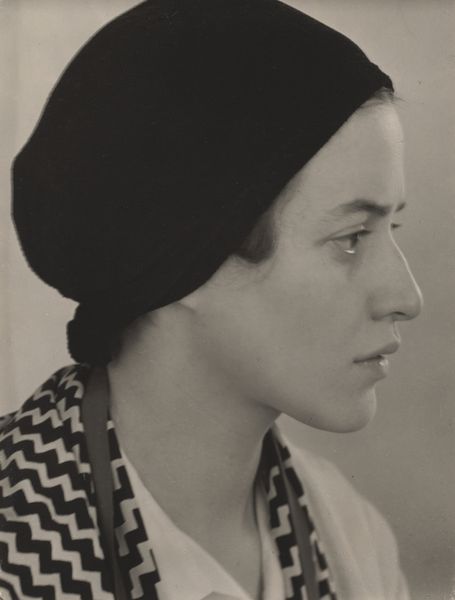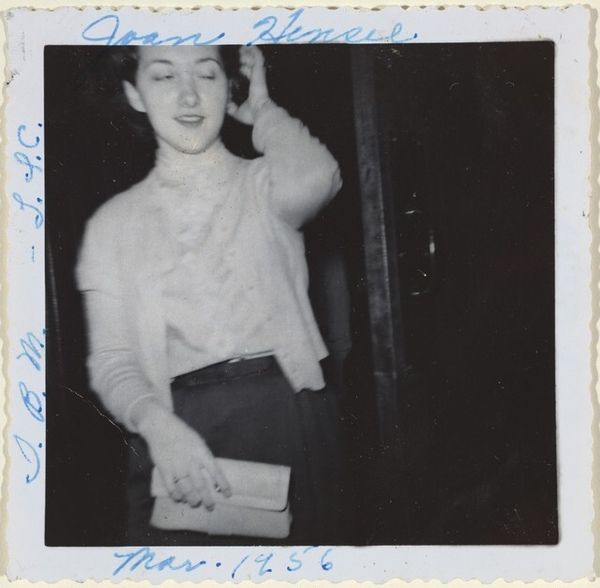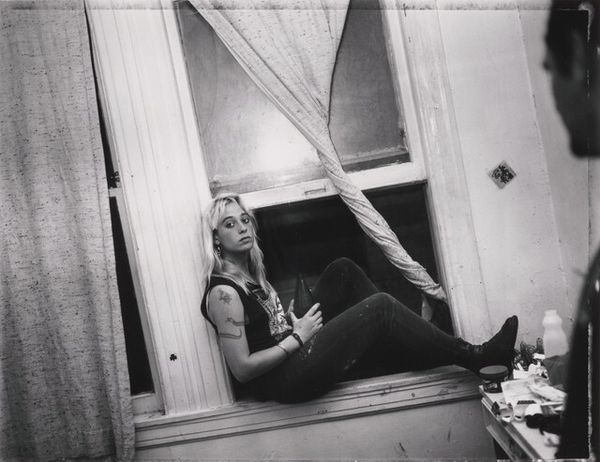
Dimensions: sheet: 35.4 × 27.6 cm (13 15/16 × 10 7/8 in.) image: 32.5 × 25.2 cm (12 13/16 × 9 15/16 in.)
Copyright: National Gallery of Art: CC0 1.0
Curator: This gelatin silver print, tentatively dated between 1990 and 1994, comes to us from Jim Goldberg, and is titled "Ragdoll with Patent Leather Purse". Editor: My first impression is one of detached melancholy, despite the clarity and strong contrast of the monochrome. The figure seems both present and lost, her gaze directed elsewhere, and it speaks to themes of alienation. Curator: Goldberg’s strength lies in his orchestration of greyscale. Note the almost surgical separation of light and dark. See how the tonality sculpts the surfaces, defining form through careful control of value, while imbuing the ordinary—a street, a purse, a glance—with substantial weight. Editor: That patent leather purse certainly catches the eye. The hard shine stands out against the surrounding soft fabrics, and the way the model tightly holds on to the purse almost like a symbol of attachment or personal identity. Curator: True. Moreover, her outfit challenges notions of unified aesthetic, creating disjunction. The mix of casual and dressy disrupts convention, the very clash creating dynamism within the image’s frame. Consider the formal opposition of the orthogonal plaid juxtaposed against the jacket's dark swath. Editor: I find myself lingering on the title, "Ragdoll," wondering what that connotes. The stiffness of the model is in tension with this title, that carries ideas of being relaxed. Ragdolls also carries ideas about comfort, protection and childness. There seems to be an absence of those things within the image. Curator: A compelling interpretation. That unease may stem from Goldberg’s self-conscious use of perspective. The moderate depth of field keeps elements of the background legible, a move against prioritizing pure subject isolation. Editor: It allows context to seep in—the architecture, the other people, even the suggestion of weather. They are all cultural symbols that subtly construct a larger, unresolved story beyond just this solitary figure. I find Goldberg so affecting because he resists easy resolution. Curator: Precisely, and the carefully considered print quality underscores that—a tactile document designed to make the viewer consider rather than simply observe. Editor: A final consideration: Goldberg’s piece pushes portraiture to include far more than what's within the frame, thus acknowledging the broader theater of lived experience.
Comments
Join the conversation
Join millions of artists and users on Artera today and experience the ultimate creative platform.
